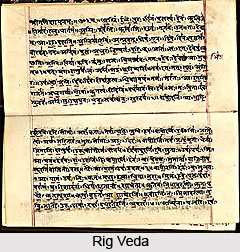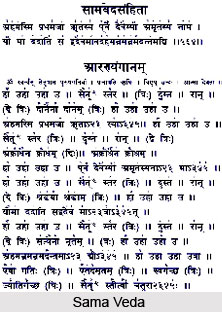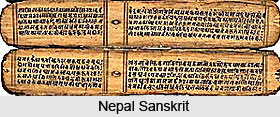 Sanskrit Language is a historical and outstandingly legend-borne Indo-Aryan language, which has since prehistoric times been considered as one of the liturgical languages of Hinduism and Buddhism. Classical Sanskrit, the period in which the language began to spread amongst the common masses, is the `standard register` as represented in the grammar of Panini, approximately around 4th century B.C.E. Its status in the societies and customs of South and Southeast Asia runs almost parallel with that of Latin and Greek in Europe and has profoundly charmed and determined most modern languages of Nepal and India. The pre-Classical form of Sanskrit is referred to as Vedic Sanskrit, with the language of the Rig Veda being the oldest and most antiquated stage preserved to this date.
Sanskrit Language is a historical and outstandingly legend-borne Indo-Aryan language, which has since prehistoric times been considered as one of the liturgical languages of Hinduism and Buddhism. Classical Sanskrit, the period in which the language began to spread amongst the common masses, is the `standard register` as represented in the grammar of Panini, approximately around 4th century B.C.E. Its status in the societies and customs of South and Southeast Asia runs almost parallel with that of Latin and Greek in Europe and has profoundly charmed and determined most modern languages of Nepal and India. The pre-Classical form of Sanskrit is referred to as Vedic Sanskrit, with the language of the Rig Veda being the oldest and most antiquated stage preserved to this date.
Sanskrit language applies itself as a member of the Indo-Iranian sub-family of the Indo-European family of languages. Its nearest ancient kin comprise the Iranian languages Old Persian and Avestan. Within the more panoptic Indo-European language family, Sanskrit shares distinctive sound modulations with the Satem languages and also with Greek.
As regards with the origin of Sanskrit language in India, scholars and researchers stand once more in argument with the purpose of explaining common features shared by Sanskrit and other Indo-European languages. Many have proposed the `migration hypotheses` laying stress on the fact that the original speakers of what became Sanskrit arrived in what is presently India and Pakistan from the north-west, some time during the early second millennium B.C.E.
The earliest authenticated and documented Sanskrit texts comprise Hindu texts of the Rig Veda, which are hypothesized to be located in the Punjab region and dated to the mid-to-late second millennium B.C.E. However, written records of any kind from such an early period fail to survive. The oldest surviving Sanskrit grammar is Panini`s Astadhyayi, legendary for its meticulous yet sophisticated handling by such a calculative man, translated to English as "Eight-Chapter Grammar". The text is essentially a prescriptive grammar.
 In this context of Sanskrit language and its ancient usage in India, the term "Sanskrit" was not looked upon as a definitive language sequestered from other languages, but rather as a specially polished or perfected style of speaking. Knowledge of Sanskrit was a an authentic stamp of social class and educational accomplishment in ancient India and the language was taught principally to members of the higher castes, through close scrutiny of Sanskrit grammarians as was Panini. Sanskrit, as the learned language of Ancient India, thus existed together with the Prakrits (vernaculars), which thus germinated into the Middle Indic dialects and eventually into contemporary modern Indo-Aryan languages.
In this context of Sanskrit language and its ancient usage in India, the term "Sanskrit" was not looked upon as a definitive language sequestered from other languages, but rather as a specially polished or perfected style of speaking. Knowledge of Sanskrit was a an authentic stamp of social class and educational accomplishment in ancient India and the language was taught principally to members of the higher castes, through close scrutiny of Sanskrit grammarians as was Panini. Sanskrit, as the learned language of Ancient India, thus existed together with the Prakrits (vernaculars), which thus germinated into the Middle Indic dialects and eventually into contemporary modern Indo-Aryan languages.
Vedic Sanskrit Language
Origin of Vedic Sanskrit can be traced as early as approximately 1500 B.C.E. (recognised date of composition of Rig Veda). Scholars often discriminate Vedic Sanskrit and Classical or "Paninian" Sanskrit language as separate `dialects`. Though they bear essential similarities, they also differ in a number of elementary points of phonology, vocabulary and grammar and syntax. Vedic Sanskrit is universally acknowledged as the language of the Vedas, a colossal collection of hymns, incantations (Samhitas), theological discourses and religio-philosophical discussions (Brahmanas, Upanishads), representing the earliest religious texts of Hindu religion.
Classical Sanskrit Language
For almost 2000 years, a cultural order was in vogue that wielded influence across South Asia, Inner Asia and Southeast Asia and to a definite extent, East Asia. A noteworthy form of post-Vedic Sanskrit is determined in the Sanskrit of the Hindu Epics, the Ramayana and Mahabharata. The digressions from Panini in the epics are in general regarded on the tremendous basis of intervention from Prakrits, or "innovations" and not because they are pre-Paninean. Traditional Sanskrit scholars coin such digressions as aarsha, or "of the rishis", the traditional designation for ancient authors. In some contexts, there also exists more "prakritisms" as opposed to in Classical Sanskrit proper.
Ancient Sanskrit grammarians had classed the vowel system into velars, retroflexes, palatals and plosives as opposed to back, central and front vowels. Other than the "four" cardinal diphthongs utilised in Sanskrit language, this ancient Indian language normally prohibits any other diphthong. Vowels in progressive sequence, wherever they occur, are transformed to semivowels according to sandhi rules.
Phonology and Sandhi in Sanskrit Language
The phonological system of rules to be implemented when amalgamating morphemes to a word and when combining words to a sentence are together clustered in a system called sandhi or placed as "composition". Texts are penned down phonetically, with sandhi made use of accordingly. Sandhi is an integral part in both ancient and present day Sanskrit language, with surging popularity reaching towards influencing Bengali language as well.
In spite of this apparent "death" of Sanskrit language and the literary usage of vernacular languages, Sanskrit continued to be used in literary cultures in India. But the "death" signified that Sanskrit would not be used again to communicate metamorphosing forms of subjectivity and sociality embodied and conceived in the modern era. Instead, it was subdued to "reinscription and restatements" of ideas already explored



















